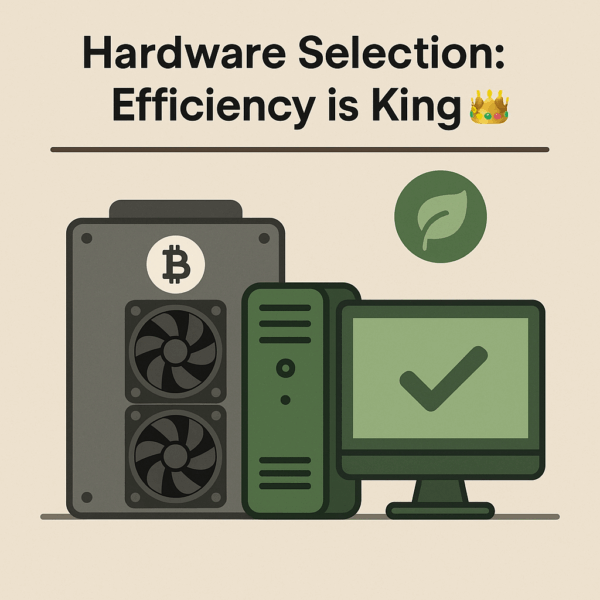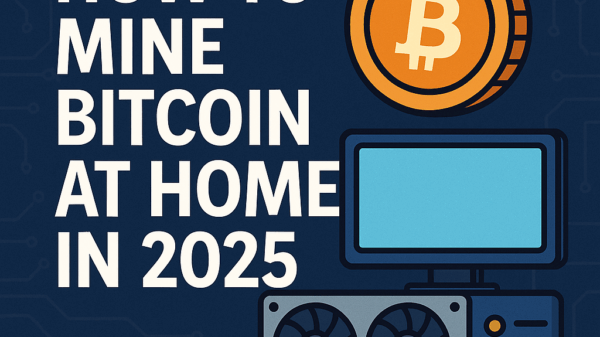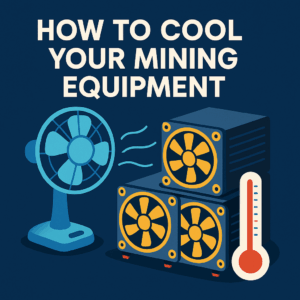How to Optimize Electricity for Mining
By Jason Miller – Crypto Writer 10.expert 🧠 Covering Bitcoin, altcoins, blockchain & Web3.
As a crypto writer and analyst, I’ve consistently emphasized that the largest ongoing operational cost for almost any mining operation, from a single home rig to a large-scale farm, is electricity. The difference between a profitable mining venture and a money pit often boils down to how effectively you manage and optimize your power consumption. In 2025, with increasing network difficulties and evolving energy markets, every watt counts.
Optimizing electricity for mining isn’t just about finding the cheapest rate per kilowatt-hour (kWh); it’s a multi-faceted approach involving hardware choices, software tuning, operational strategies, and even exploring alternative energy sources. Ignoring this crucial aspect is a surefire way to see your digital gold disappear into utility bills.
Let’s explore how to truly optimize electricity for your mining operation.
How to Optimize Electricity for Mining: Powering Your Profits, Not Your Problems ⚡💰
Electricity is the lifeblood of crypto mining. Mastering its optimization is the key to sustained profitability and long-term success.
Location, Location, Location: Choose Your Mining Spot Wisely 🗺️
The single biggest factor often outside your direct control, but paramount for larger setups:
* Low Electricity Rates: Research states or regions with the lowest industrial or residential electricity rates. As of mid-2025, states like North Dakota, Idaho, Nebraska, and Montana often have some of the lowest average electricity rates in the U.S.
* Stable Grid: Ensure the local grid is reliable and can handle the continuous load without frequent outages or brownouts.
Hardware Selection: Efficiency is King 👑

The most energy-efficient miners cost more upfront but save significantly on electricity over their lifespan.
* Joule per Terahash (J/TH) / Megahash (J/MH): This metric indicates how much electricity (Joules) is consumed per unit of hashing power. Lower is always better.
* Newer Generation ASICs: Generally offer significantly better efficiency than older models (e.g., Bitmain Antminer S21 series, MicroBT WhatsMiner M60 series).
* GPU Efficiency: For GPU mining, research which specific GPU models are most efficient for your target algorithm (e.g., AMD’s RDNA 2/3 series or Nvidia’s 30/40 series can offer good efficiency).
Power Supply Unit (PSU) Efficiency 🔋
Don’t skimp on your PSU:
* 80 PLUS Rating: Invest in 80 PLUS Gold, Platinum, or Titanium rated PSUs. These convert a higher percentage of AC power into usable DC power, wasting less as heat. Even a few percentage points of efficiency can save significant money over time.
* Proper Sizing: Ensure your PSU is appropriately sized for your equipment, operating within its most efficient load range (typically 50-80% of its maximum capacity).
Software Optimization: Underclocking & Undervolting (GPUs) 🛠️
For GPU miners, this is a critical step:
* Undervolting: Reduce the voltage supplied to your GPUs while maintaining stability. This is the most effective way to cut power consumption without drastically impacting hashrate.
* Underclocking Memory/Core: Slightly reduce core and memory clock speeds. While it might lower hashrate marginally, the power savings often outweigh the loss in revenue.
* Mining OS: Use a dedicated mining OS (HiveOS, Minerstat OS) which provides robust tools for precise power and clock control.
ASIC Power Modes ⚙️
Many ASIC miners offer different operating modes:
* Efficiency Mode: Choose this mode over “performance” or “turbo” modes if your electricity cost is high. It prioritizes hashrate per watt, even if it means a slightly lower raw hashrate.
* Custom Firmware: For advanced users, some third-party firmware can unlock further undervolting capabilities for ASICs, but use with caution as it can void warranties.
Time-of-Use (TOU) Electricity Rates ⏰
Many utility companies offer tiered rates based on time of day:
* Off-Peak Mining: Schedule your mining operations to run primarily during off-peak hours (e.g., late night, early morning, weekends) when electricity is cheapest.
* Automation: Use smart plugs or mining OS scheduling features to automatically power down or switch to low-power modes during expensive peak hours.
Demand Response Programs 🔌
Some utilities offer incentives for commercial or large residential users to reduce power consumption during peak grid stress:
* Participate: Enroll in these programs to earn credits or payments by temporarily curtailing your mining operations when electricity demand is highest. This turns your miners into a revenue source even when idle.
Waste Heat Recovery: Turn Heat into Value 🔥➡️🏠
This innovative approach converts a cost into a benefit:
* Space Heating: Use the exhaust heat from your miners to warm your home, garage, greenhouse, or workshop during colder months. Devices like Heatbit integrate miners directly into home heaters.
* Water Heating: Some advanced setups or specialized miners can heat water for domestic use.
* Drying Applications: Utilize the heat for drying wood, agricultural products, etc.
* Consider a PUE (Power Usage Effectiveness) approach: Aim to use all the energy input, even the waste heat, to achieve a PUE closer to 1.0.
Renewable Energy Integration ☀️💨
For long-term sustainability and cost reduction:
* Solar Panels: Install solar panels to offset a portion or all of your mining electricity consumption. Battery storage can store excess solar for night-time mining.
* Wind Turbines: In suitable locations, small-scale wind turbines can provide a consistent power source.
* Hydroelectric (Small Scale): If you have access to a suitable water source, micro-hydro systems can be highly efficient.
* Government Incentives: Research federal (e.g., Investment Tax Credit in the U.S.) and state incentives for renewable energy installations in your area in 2025.
Smart Grid Integration & Energy Management Systems 🌐
For larger home setups or small farms:
* Real-time Monitoring: Implement systems that provide real-time data on consumption for each miner or rig.
Automated Controls: Use smart systems to dynamically adjust power settings based on electricity prices, grid conditions, or even ambient temperatures.
Proper Cooling (Yes, it saves electricity!) ❄️
While it seems counter-intuitive, efficient cooling reduces electricity consumption:
* Prevents Throttling: Keeping miners cool ensures they operate at their rated hashrate, preventing power-hungry throttling.
* Fan Efficiency: Well-cooled miners mean fans don’t have to spin at 100% all the time, saving power.
* Reduced AC Load: Better airflow and passive cooling reduce the need for expensive air conditioning.
Load Balancing & Dedicated Circuits ⚡🔌
- Avoid Overloading: Ensure your electrical circuits can handle the continuous load. Overloaded circuits are inefficient and dangerous.
- Dedicated Circuits: For high-power rigs, install dedicated 240V circuits to ensure stable power delivery and reduce line loss.
Negotiate with Your Utility Provider 📞
If you’re a significant consumer, even as a home miner, it might be worth contacting your local utility:
* Commercial Rates: In some cases, you might qualify for commercial electricity rates, which are often lower than residential rates, although they may come with demand charges.
* Special Programs: Inquire about any specific programs or discounts for high energy users or those adopting renewable energy.
Regular Maintenance & Cleaning 🧹
A dusty miner is an inefficient miner:
* Dust Buildup: Dust acts as an insulator, causing components to run hotter and fans to work harder, increasing power consumption.
* Clean Regularly: Periodically clean your miners with compressed air.
Continuous Education and Adaptation 📚
The energy market and crypto mining landscape are constantly evolving:
* Stay Informed: Keep abreast of new hardware, software updates, changes in electricity tariffs, and government incentives.
* Re-evaluate: Regularly re-calculate your profitability, factoring in current electricity costs and miner performance. Be ready to adapt your strategy if conditions change.
By meticulously implementing these optimization strategies, you can transform your electricity bill from a major burden into a manageable, even advantageous, aspect of your cryptocurrency mining journey.








